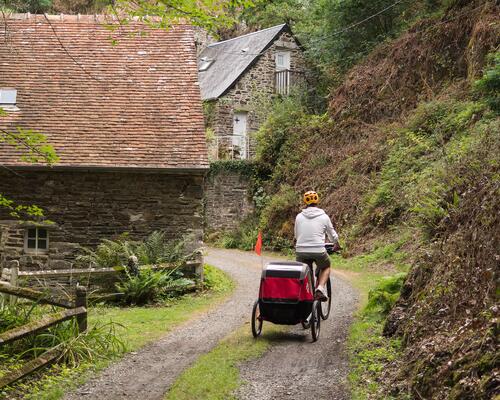How to plan your bike touring itinerary
FOLLOW AN EXISTING ROUTE
In this case, you simply need to get hold of the GPS route or a detailed map showing where you want to go. Some routes even have signage along the way. Which makes navigating significantly easier. In France, AF3V's interactive map lists all of the country's greenways and bike paths. It can be a handy source of inspiration. You can also use the EuroVelo network of 19 long-distance cycling routes that cross the whole of Europe (10 of which go through France). For shorter rides in the great outdoors, the Decathlon Outdoor app is sure to have something to suit.
Across the pond, Adventure Cycling have been mapping cycling paths all over the country for more than 40 years. Their database includes such famous trails as the Great Divide Mountain Bike Route: an entirely off-road trail that traverses the Rockies. Another purveyor of adventurous routes is www.bikepacking.com. There, you'll find ways of travelling the entire world without setting foot on a paved road.
PLAN YOUR OWN ROUTE
If you'd rather come up with a route yourself, a route-building website like Komoot or OpenRunner could prove useful. These tools will enable you to calculate the total distance of your trip, figure out the different stages, and get an idea of the elevation gain and type of terrain (paved roads, bike paths, trails, etc.). They can also be used to find points of interest and food and accommodation options. Once you're out on your ride, you can use the smartphone apps to guide you. Of course, there's nothing stopping you from bringing along your trusty old paper map as a back-up solution. Plus, it's a good way of being able to see your whole route in one go. France's network of secondary roads is one of the best and most extensive in the world. There are almost unlimited possibilities for cycling itineraries.
TAKE PART IN AN ORGANISED TRIP
This final option is a great way to discover the joys of bike touring, but with a safety net. The way it works is that you buy a package from a tour company, which generally contains a detailed guidebook and a set of additional services (these might include bag transport, accommodation, meals, support during your ride). It can considerably reduce the amount of prep you need to do before your ride. The go-to website for a custom bike tour in France or across Europe, with complete peace of mind, is www.decathlontravel.com.
Another option is to take part in a Mad Jaques or similar event. This organisation runs short, affordable turnkey bike trips. All participants are given a GPS tracker and a map. It's an accessible adventure with minimal prep and maximum party atmosphere!











